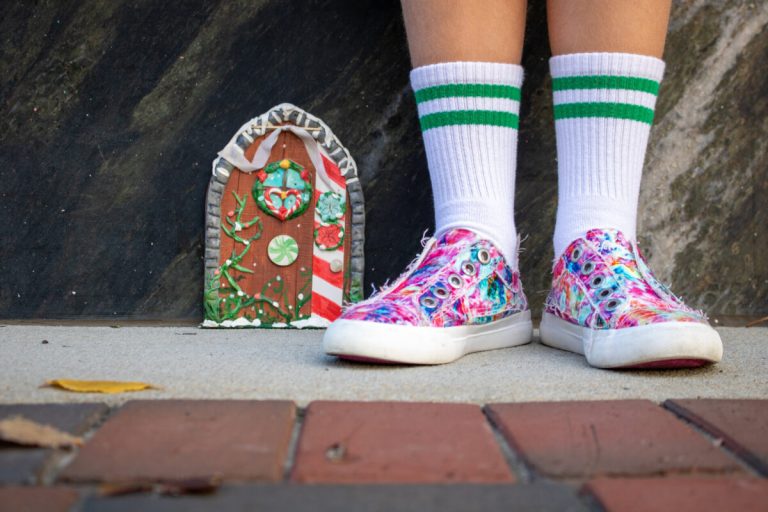4 at-home science experiments from the experts at McWane Science Center
Reading time: 7 minutes
Sponsored

School may be out for summer, but learning never stops at McWane Science Center. While we all wait for McWane Science Center to reopen its doors, check out these favorite at-home science experiments from Mr. Science and more of the McWane gang. Trust me, you’ll want to try them!
1. Creating Static Electricity

Nominated by: Peggy Chowning, Vice President of Education
“Science experiments at home are fun, but they’re also a great way to help children learn by doing, think critically and discover how science is relevant in our own lives. Concepts that might be difficult on paper become clearer when you can do and see what’s happening. Understanding a concept helps children learn about the world around them and how it works.”
Science Experiment: Creating Static Electricity
Area of study? Electricity
What will you learn? How electrical charges work and how opposites attract.
Age: 1st-5th grade
Supplies Needed:
- Balloon
- Wool fabric
- Empty soda can
Activity 1:
- Blow up a balloon and tie it off.
- Rub the balloon back and forth on a piece of wool (or your hair!) several times.
- Test it: does your balloon will “stick” to areas in your home, such as the wall.
Activity 2:
- Using the same balloon, lay an empty soda can (on its side) on a table or the floor.
- Rub the balloon back and forth several times on a piece of wool (or your hair!) several times.
- Hold the balloon close to (but not touching) the can.
- Test it: does the can try to follow the balloon?
Activity 3:
- Blow up 2 balloons and tie them off.
- Rub the balloons back and forth on a piece of wool (or your hair!) several times.
- Test it: what happens when you hold the two balloons close to each other after “charging” them?
2. Fruit DNA

Nominated by: Marie Wilson, Education Specialist
“I adore science! It is a way to understand the world around us and learn more about the universe we live in. Conducting experiments teaches you how to think creatively and analytically, which are skills that can be used in any situation.”
Area of study: DNA isolation and the macrostructure of DNA
What will you learn? How substances can be isolated from plants and how sometimes those substances can help us. You will also learn that the macrostructure of DNA is tangled and stringy.
Age: 5 and up with adult supervision
Supplies Needed:
- 2 strawberries
- 1 zip top plastic bag
- 2 empty cups
- Teaspoon measuring spoon
- 1/2 cup measuring cup
- 2 teaspoons of dishwasher detergent
- 1/2 cup water
- 1 coffee filter
- A small amount of COLD rubbing alcohol. (Place in freezer several hours before experiment.)
- 1 toothpick
- 1 coffee stirrer for mixing
- 1 teaspoon salt
Steps:
- Remove all greenery from two strawberries and place the berries in a ziplock bag. Be sure to let the air out before sealing the bag.
- Smash the strawberries for about 2 minutes, or until completely smashed. This will start to break open the fruit cells and release the DNA.
- Make DNA extraction liquid by mixing detergent, salt and water together.
- Add 2 teaspoons of mixture to the bag of strawberries. Let the air out of the bag and reseal it.
- Smash the berries for one minute.
- Place a coffee filter inside your second empty cup, open your strawberry bag and pour the strawberry/DNA extraction liquid mixture into the filter.
- Pour COLD rubbing alcohol down the inside of the cup. The amount should equal that of the strawberry liquid.
- Wait a few seconds and you will see a stringy, white, cloudy substance develop in the top layers of the liquid.
- Test it. Use a toothpick to pick up and examine the DNA.
3. Rainbow in a Jar

Nominated by: Katie Parker, Education Specialist
“The only way to get really good at something is to practice practice practice! Science is all around us, whether you realize it or not. At McWane, we are huge advocates of STEM/STEAM (Science Technology Engineering Art Mathematics). With this entire STEM movement, practicing science at home can lead to amazing science learners, maybe even future scientists!”
Science Experiment: Rainbow in a Jar
Area of study: density of liquids
What will you learn? Liquids with a higher density (weight) weigh more than liquids that are less dense. Less dense liquids will float to the top of the jar and sit atop more dense (heavier) liquids.
Age: All. Parental supervision required for younger scientists.
Supplies Needed:
- Tall glass jar
- Food coloring: red, blue and green
- 1/4 cup honey
- 1/4 cup BLUE dish soap
- 1/4 cup water
- 1/4 cup olive oil
- 1/4 cup rubbing alcohol
- Jars for mixing and pouring
- Teaspoons for mixing
Steps:
- Add one drop of red food coloring and one drop of blue food coloring to 1/4 cup of honey and stir until combined. This will create a purple colored liquid. Pour the purple liquid carefully into the tall jar.
- Add about 1/4 cup of blue dish soap to the tall jar.
- Add a few drops of green food coloring to 1/4 cup of water and mix until combined. Then carefully pour the green liquid into the tall jar.
(Tip: when pouring content into the green liquid, tilt your jar so the liquid runs down the side slowly.) - Wait a few moments, then slowly pour 1/4 cup of olive oil into the jar. (Use tip from step 3.)
- Add a few drops of red food coloring to 1/4 cup of rubbing alcohol and mix until combined. Then carefully pour the red liquid into the tall jar. (Tip: tilt the jar and pour VERY slowly in order to get a distinct rainbow.)
4. Ice Melting Test

Nominated by: Jonah Cohen, Education Specialist:
“When you try an experiment, your first reaction is likely to be ‘that’s cool!’ or ‘that’s freaky!’ This is not a trivial reason for doing something. Nobel winning physicist once figured out some esoteric physics properties involved in a plate wobbling as it moved through the air. When he told another Nobelist about it, the other guy asked “Uh, what the purpose of this?” Feynman replied, ‘There is no purpose, it’s just fun.’ He wrote extensively about what he called ‘the pleasure of finding things out’.”
Science Experiment: Ice Melting Test
Area of study: thermodynamics
What will you learn? Metal is a better conductor of heat than wood. Though heat moves out of each object and into the ice, heat moves out of the metal faster, which melts the ice faster.
Age: All
Supplies Needed:
- Flat metal object (i.g., bottom of a pot)
- Flat wooden object (i.g., cutting board)
- Ice cubes
Steps:
- Feel your metal object and wooden object. Which one feels warmer?
- Make a prediction. If you place an ice cube on each objects’ surface, which will melt the ice fastest?
- Test it. Did your ice cubes melt faster on your metal object than the wood object?
Discover More

For even more at-home science experiments, check out McWane Science Center’s free virtual education program—Cabin Fever.
To help keep the magic of science alive in Birmingham, donate to McWane Science Center. Learn how.
Sponsored by:


![EXCLUSIVE: New listening lounge opening in Lakeview [PHOTOS] EXCLUSIVE: New listening lounge opening in Lakeview [PHOTOS]](https://wp.fifu.app/bhamnow.com/aHR0cHM6Ly9iaGFtbm93LmNvbS93cC1jb250ZW50L3VwbG9hZHMvMjAyNS8xMi9oaWdoZGl2ZS03LTEtc2NhbGVkLmpwZw/ac115f33c5c2/new-listening-lounge-opening-in-lakeview.webp?w=768&h=0&c=0&p=1577962)

